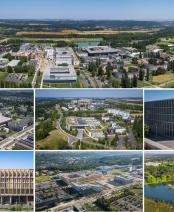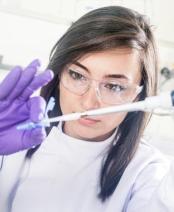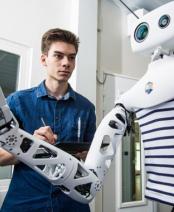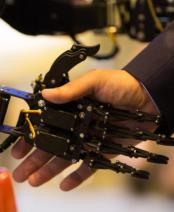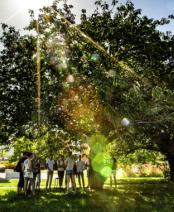Interview with Anne Bourdon, researcher in plasma science
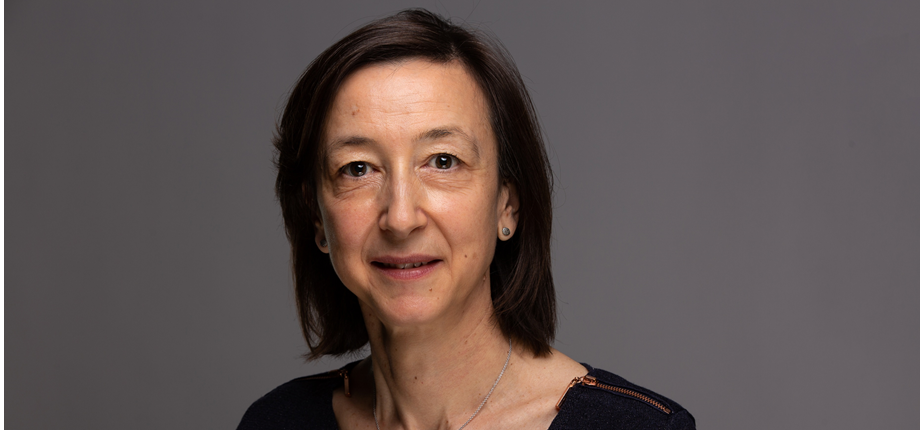
Anne, you are a Director of Research at CNRS, expert in low temperature plasmas and the Deputy Director of the LPP. How did you become interested in science, when did you choose a career in physics, and why?
Until the end of secondary school, my dream was to become an interpreter and to be able to speak multiple languages. In high school, I had inspiring maths and physics teachers who really helped me develop a passion for their subject. As a consequence, I pursued my studies in science and engineering. I remember that I was very curious and wanted do something useful later. But I did not have anything specific in mind yet.
However, during my studies in engineering, I didn't fully give up my dream. I really appreciated having the opportunity to do many other things: languages, sports, theatre... in addition to the science courses. So, I took the opportunity to learn Japanese and improve my English and German skills!
What about scientific research?
During my studies, I did an internship in a research laboratory because it was recommended to do so.... and I really liked it! One year later, I started my doctoral research in plasma physics!
Anne, which topics are you focusing your research on today?
My research at the LPP focuses on low temperature plasmas. Currently, I am working on two topics. The first is about low temperature plasmas at atmospheric pressure. This type of plasmas has already caught my interest for a long time. In recent years, this field has become very active because low temperature plasma (LTP) jets have shown very promising results for biomedical applications. On this topic, I am studying the dynamics of these plasmas with Olivier Guaitella at the LPP. We are collaborating with the Laboratory for Interfaces and Thin Films (LPICM), TU/e Eindhoven (Netherlands), and Mazaryk University (Czech Republic). We are the first to make quantitative experiment/modeling comparisons on the spatial temporal evolutions of the electric field when these jets impact surfaces. A key issue for their applications is to fully understand and control the electric field in target surfaces.
My second topic deals with low temperature plasmas for the electric propulsion of satellites. Since 2016, I hold an ANR Industrial Chair "POSEIDON" to develop new plasma thrusters for satellites in low-Earth orbit. This Chair is co-sponsored by Safran Aircraft Engines and the ANR. Currently, the design and development of thrusters are done semi-empirically with long and expensive lifespan testing campaigns. As part of the Chair, Pascal Chabert and I have put together a small team on propulsion at the LPP. Alejandro Alvarez-Laguna has recently joined the team after having been recruited by the CNRS.
One of our objectives is to implement a new development method combining experiments and numerical simulations. This is a very exciting project on which we have the chance to work with excellent and highly motivated students!
Your projects are complex and exciting. We feel that there is an important cohesion within the team, but also see that your field remains predominantly dominated by men. According to statistics in France, women account for just 22% in physics. There is much talk these days about the position of women in science, about stereotypes, and clichés that persist. Anne, you've been in the scientific community for more than 20 years, do you notice any changes in the attitude towards women?
When I was a PhD candidate, I was the only girl in the team and while answering the phone, I was often mistaken for a secretary! Since then, many things have evolved; women's position in society and science is changing and I am pleased about this. Let's take the example of the LPP where I work, which has today 20% of female researchers. Since its creation in 2009, a woman has been present in the management duo. From 2020, the management has become even 100% female!
To improve the position of women in science, we must continue to fight against conscious and unconscious biases, and there is still a long way to go. I recently learned that among the 40 ANR industrial chairs, only three are held by women...
Note that currently the CNRS has a policy of gender equality with a high priority on the proportion of recruited and promoted women. I am not fond of quotas for the sole purpose of ensuring equality. I think we have to be careful not to sacrifice capable male candidates in order to achieve this.
Indeed, in recent years, we see a lot of efforts in attracting more young women to scientific careers. However, most women tend to specialize into life sciences. How could young girls be encouraged to pursue a career in physics?
Absolutely, women prefer life sciences. We can even notice this in our laboratory: for example, internship and PhD thesis topics on the electric propulsion of satellites attract very few applications of female researchers, while those relevant to plasmas for medical or chemistry-related applications are more attractive.
It is important to continue to encourage and foster girls’ interest in science in general. Science needs diverse and talented people, with crossing viewpoints and complementary approaches. There are many ways of working as an engineer and researcher. Women have their own place... but the old clichés prevail and sometimes seem even stronger than when I was a student myself. Everything seems to be played out very early in school, maybe even before secondary school. There is a need for better communication on the diversity of jobs in science among schoolgirls.
In addition to your work as a researcher, you are Deputy Head of the recently launched PLASMAScience Graduate School. Why did you decide to dedicate yourself to this project?
Researchers in plasma physics in a laboratory of IP Paris work in an intellectually stimulating environment. Plasma physics is one of 10 IP Paris' priority fields of research. This field is studied in 7 laboratories - CMAP, CPHT, LOA, LPICM, LPP, LSI, LULI - covering a wide range of plasma fields at the cutting edge of science and technology: thermonuclear fusion, space plasmas, plasmas for medicine, nanotechnology, environment etc.
I got really involved in establishing the EUR PLASMAScience project because I am convinced that we have a unique environment at IP Paris. We provide training through high-quality research in plasma physics.
The PLASMAScience initiative offers innovative training opportunities from the Master 1 and during the thesis, in close connection with IP Paris' research laboratories and their international partners. To train students in a better way in plasma physics is important for the future of this discipline, which opens up many possibilities for fundamental studies and innovative applications.
It was an enormous challenge to write such a uniting project on plasmas at IP Paris for the first time. I'm delighted that it has been selected!
Note that the PLASMAScience project is led by a 100% female duo. The management of the PLASMAScience consists of two women: Dominique Fontaine, Head, and myself, Deputy-Head. We also recruited a woman as a project manager. In addition, the PLASMAScience’s Council respects parity: among 15 members there are 7 women!
However, the PLASMAScience initiative is still in its infancy. Plasma physics at IP Paris has an enormous potential to develop.








